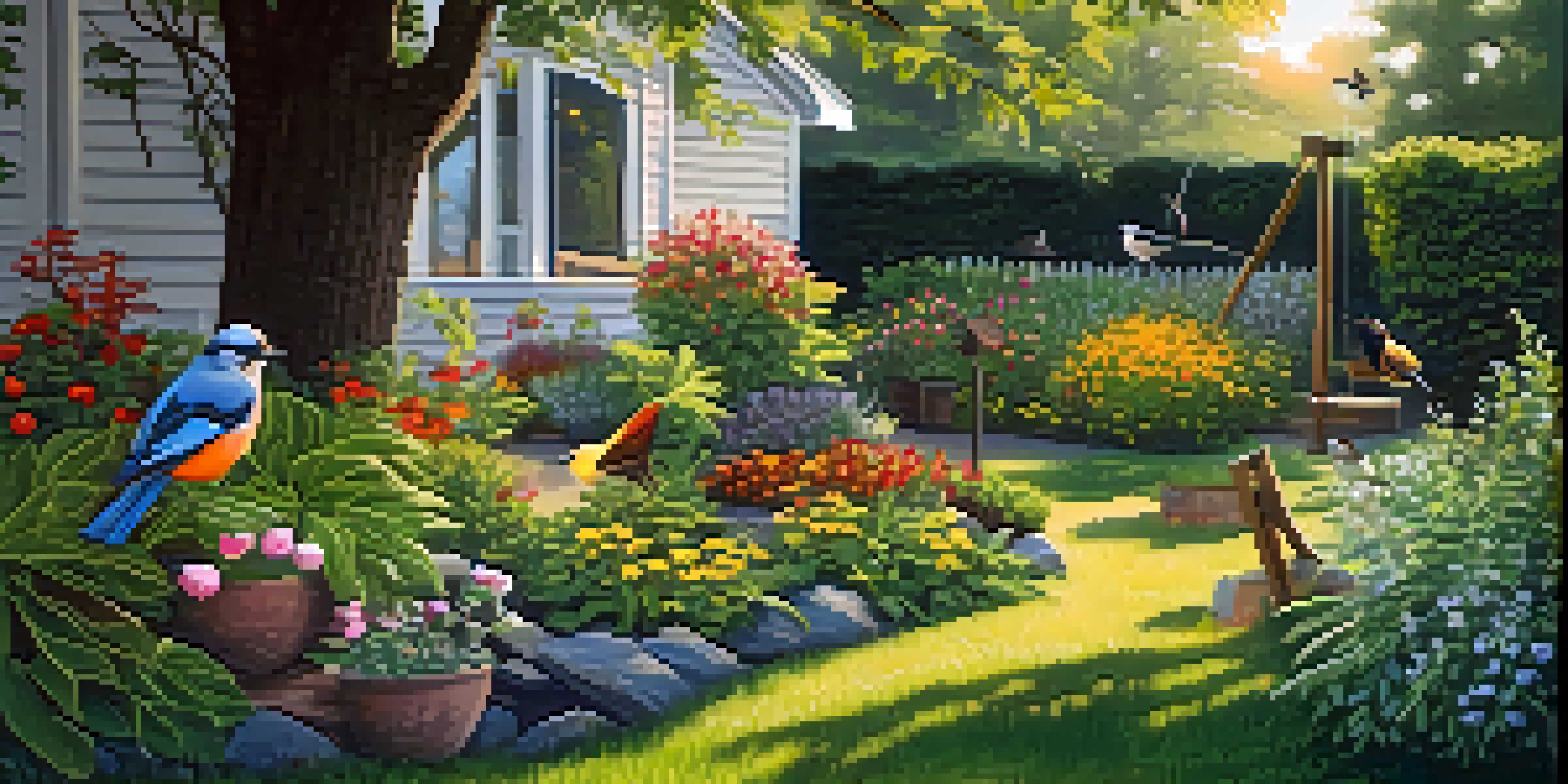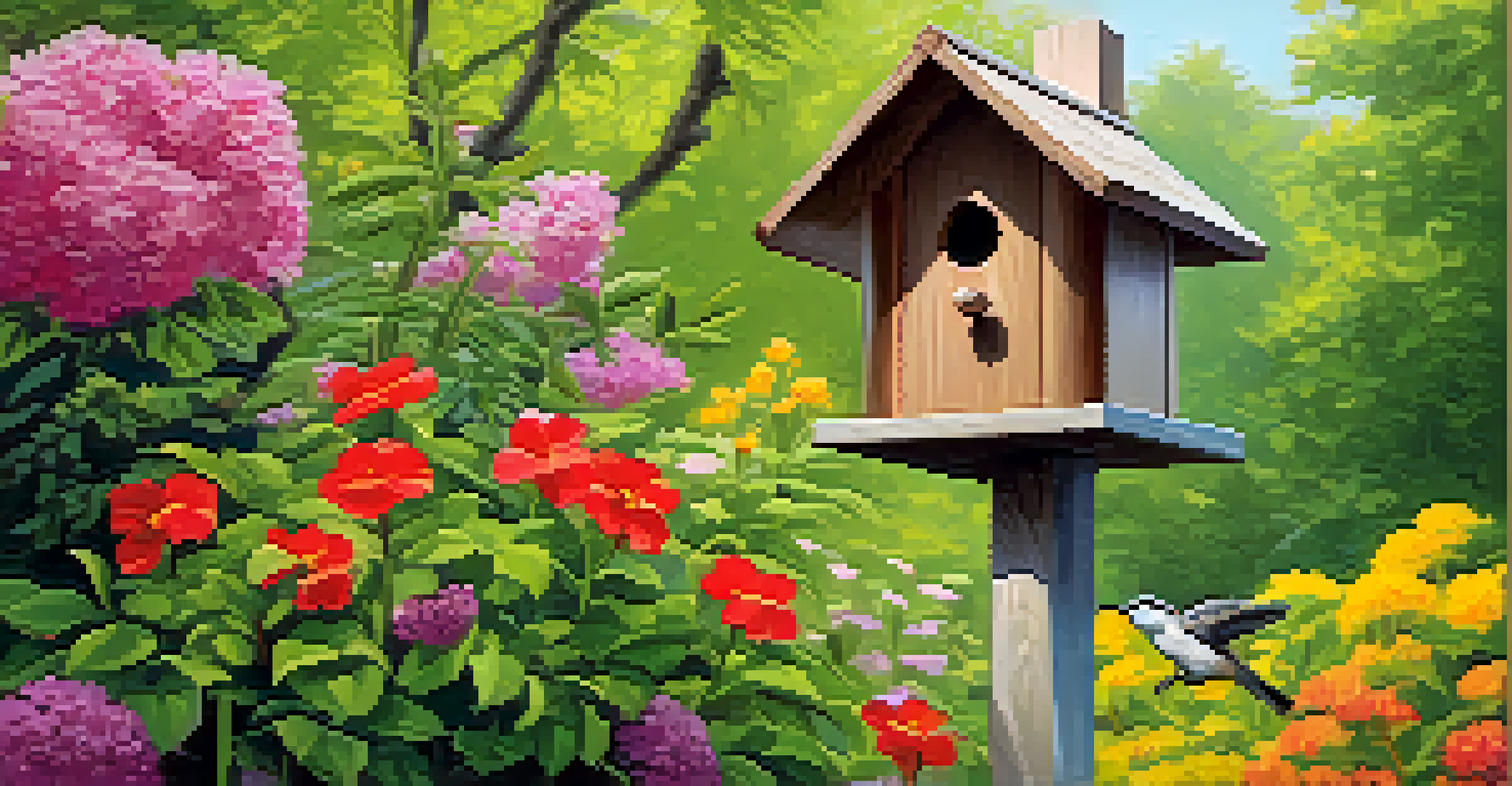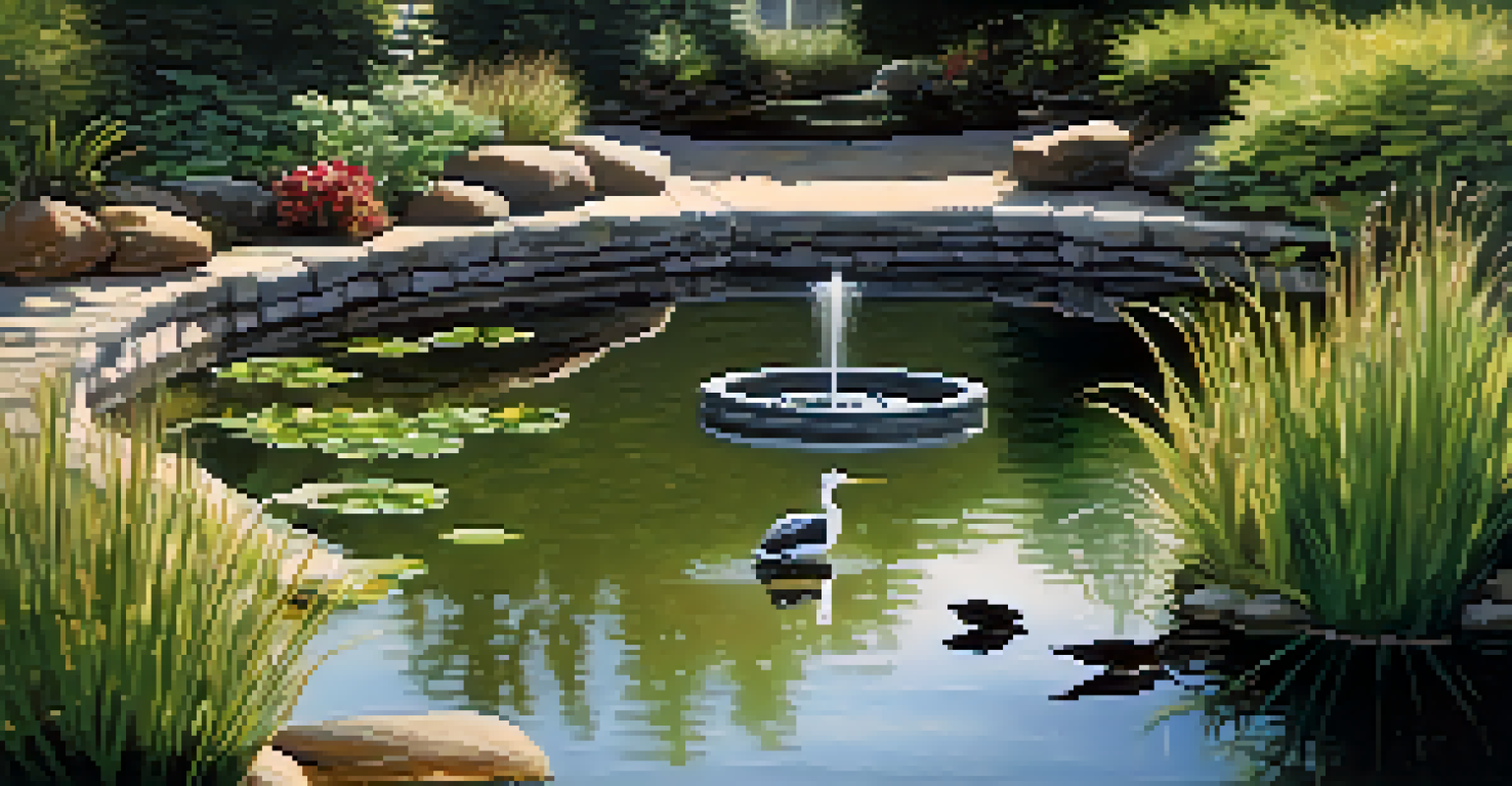How to Create a Bird-Friendly Backyard Habitat

Understanding the Importance of Bird Habitats
Birds play a crucial role in our ecosystem, from pollination to pest control. A healthy bird population can indicate the overall health of the environment. By creating a bird-friendly habitat, you're not just enhancing your backyard; you're contributing to biodiversity and ecological balance.
The earth has music for those who listen.
When you provide the right conditions, you attract various bird species, each with unique behaviors and needs. This diversity adds color and life to your yard, making it more enjoyable for you and your family. Plus, watching birds can be a relaxing and rewarding experience.
Creating a habitat is also an opportunity to educate others about the importance of preserving wildlife. As more people learn about the benefits of bird-friendly environments, more backyard habitats can be established, leading to healthier ecosystems.
Choosing the Right Location for Your Habitat
The location of your bird-friendly habitat is key to its success. Look for a spot that offers natural shelter, such as trees or shrubs, which provide birds with places to hide from predators and rest. Ideally, this area should also have access to food sources and water.

Consider placing feeders and bird baths in a quiet area, away from heavy foot traffic or noisy activities. Birds are more likely to visit if they feel safe. Additionally, positioning your habitat near flowering plants can attract insects, which are a food source for many bird species.
Create Diverse Bird Habitats
Establishing a variety of food sources, shelter, and native plants fosters a welcoming environment for different bird species.
Don't forget about the sun! Birds need sunny spots for warmth during cooler months and shaded areas to escape the heat in summer. Finding a balance between sun and shade will make your habitat more inviting all year round.
Selecting Native Plants for Your Backyard
Native plants are essential for creating a bird-friendly habitat because they provide the right food and shelter for local bird species. These plants are adapted to your local climate and soil, requiring less water and maintenance. They also attract native insects, which are a critical food source for birds.
What we are doing to the forests of the world is but a mirror reflection of what we are doing to ourselves and to one another.
When choosing plants, consider a mix of trees, shrubs, and flowering plants. For example, berry-producing shrubs like serviceberry and elderberry can feed birds in the fall. Flowering plants, such as coneflowers and sunflowers, can attract pollinators and provide seeds for birds.
Creating layers of plants can enhance your habitat's appeal. Taller trees can provide cover for larger birds, while lower shrubs can attract smaller species. This layered approach mimics natural environments and encourages a diverse range of birds.
Providing Food Sources for Your Feathered Friends
To attract birds, you'll want to offer a variety of food sources. Seed feeders filled with sunflower seeds, millet, and thistle can draw in many species. Additionally, suet feeders are excellent for attracting woodpeckers and other insect-eating birds.
If you have the space, consider planting bird-friendly plants that produce seeds, berries, or nectar. Plants like black-eyed Susans or zinnias can attract finches and hummingbirds. Creating a buffet of options helps ensure that birds have access to food throughout different seasons.
Ensure Safety for Backyard Birds
Reducing hazards such as window collisions and pet threats is crucial for protecting birds in your habitat.
Don't forget to keep your feeders clean and filled! Regular maintenance will encourage birds to return consistently. A reliable food source can be especially important during harsh weather when natural food may be scarce.
Creating Water Features to Attract Birds
Water is a vital resource for birds, so incorporating a water feature into your backyard can significantly enhance its appeal. Bird baths are an easy and effective way to provide fresh water. Choose a shallow basin with sloped sides to ensure birds of all sizes can access it safely.
Consider adding a small fountain or a bubbling water feature. Birds are often attracted to moving water, which can also help keep the water clean and fresh. Just be sure to change the water regularly to prevent stagnation and mosquito breeding.
If space allows, creating a small pond can provide habitat for both birds and other wildlife. A pond can attract a variety of species, including ducks and shorebirds, offering a unique opportunity for birdwatching in your own backyard.
Providing Shelter and Nesting Sites for Birds
Birds need safe places to nest and raise their young, so providing suitable shelter is essential. Leaving natural features like shrubs or tall grasses undisturbed can create a perfect nesting environment. Additionally, consider adding birdhouses to your yard, tailored to the species you want to attract.
When selecting birdhouses, make sure they are the right size and provide appropriate entrance holes for specific birds. For example, a bluebird house has a different entrance hole size than a wren house. Position these houses in sheltered areas to protect nesting birds from predators and harsh weather.
Provide Essential Water Features
Incorporating bird baths or small ponds offers vital hydration and attracts a wider range of bird species.
It's important to clean out birdhouses after the nesting season. This ensures they remain inviting for future occupants and helps prevent the spread of parasites. Regular maintenance can improve the success of nesting birds in your backyard.
Reducing Hazards to Keep Birds Safe
While creating a bird-friendly habitat, it's essential to consider potential hazards that could harm birds. One common threat is window collisions. To reduce this risk, consider applying bird-safe window decals or netting to break up reflections that can confuse birds.
Cats are another significant danger to outdoor birds. If you have cats, consider keeping them indoors or building a catio (a safe outdoor enclosure) to protect both your pets and local wildlife. Educating others in your community about responsible pet ownership can also help reduce the threat to birds.

Lastly, avoid using harmful pesticides and chemicals in your garden. These substances can poison birds directly or contaminate the food sources they rely on. Opt for organic gardening methods to ensure a safe environment for both plants and wildlife.